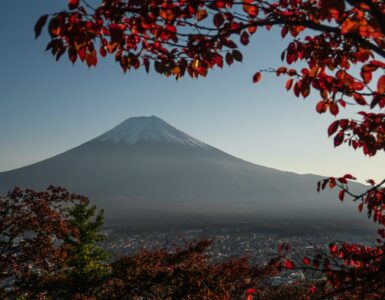Southeast Asia – the third most populous geographical region in Asia after South Asia and East Asia. This region is culturally and ethnically diverse, with different ethnic groups speaking hundreds of different languages. You may now wonder which countries can be found in this region? What types of cultures can we expect to see here? Today, we will discuss both the human and physical geography of Southeast Asia.
Southeast Asia
Like how it sounds, Southeast Asia is in the south-eastern subregion of Asia. It consists of two different geographical parts – mainland Southeast Asia and maritime Southeast Asia. Maritime Southeast Asia is also known as the Malay Archipelago and is a string of archipelagos to the south and east of the mainland. The region is composed of eleven different countries. This includes Brunei, Burma, Cambodia, Indonesia, Laos, Malaysia, Philippines, Singapore, Thailand, Timor-Leste, and Vietnam.
Demographics
By the end of the 20th century, Southeast Asia’s population was near half a billion. However, as of 2018, Southeast Asia is home to 655 million people, making it the world’s third most populous subregion. That is 15% of Asia’s total population!
Indonesia has the largest population within Southeast Asia, with more than 270 million residents. Conversely, Brunei has the smallest population, with over 430 thousand residents. Indonesia is also the largest country in Southeast Asia with 1.9 million km² of land, while Singapore is the smallest with 719 km². Since Indonesia has the largest population, it is natural to assume that its population density would be the highest in the region. However, Indonesia only has a population density of 151 residents per km². On that note, Brunei is the least populated country in Southeast Asia, with a population density of 83 residents per km².
The 11 countries have HDI values varying from very high human development to medium-high development. The top three countries with the highest HDI value are Singapore, Brunei, and Malaysia, with HDIs of 0.938, 0.838, and 0.810, respectively. Singapore’s HDI makes it 11 out of 189 countries and territories. That is an incredible feat despite being one of the smallest countries in the world! This also makes the average HDI value of Southeast Asia is 0.722.
Cultures
Southeast Asia’s primary cultural influence originates from the Islamic world and India and China. Diverse cultural influence is more in the Philippines. This is derived mainly from the period of Spanish and American rule. India influenced the traditions of the Filipinos, and the Chinese and Japanese influenced their trading times. You can see this in those who eat with their fingers, who are most likely influenced by Indian culture, and the culture of China influenced those using chopsticks during meals. Have you ever wondered about the origins of your eating methods?
The cultural influence of Southeast Asia is not only limited to food. The region offers a distinctive experience, with underlying tropes and traditions taking on new life and interpretations within each nation. Some of the top few festivals include celebrating Chinese New Year and Hungry Ghost Festival in Singapore, Hindu Thaipusam in Malaysia, Songkran in Thailand, and Chol Chnam Thmey in Cambodia. You can learn about the unique history and contemporary contexts through the different festivals.
Ethnicities
Southeast Asia boasts many cultures and ethnic groups. The regional diversity is due to land and sea routes’ position.
Today, the Javanese are the largest ethnic group in Southeast Asia. More than 100 million Javanese people are primarily concentrated in Java, Indonesia. The second-largest ethnic group in Southeast Asia is the Vietnamese, or the Kinh people. They make up 86 million in population, with Vietnamese living in Vietnam. In addition, the Thais also make up a significant population with 59 million residents, making them the majority ethnicity in Thailand.
Speaking of ethnic groups, there are also more than 350 ethnic minorities in the countries of Southeast Asia! However, for historical reasons or political, cultural, or linguistic differences, they are often unrecognised by dominant ethnic groups. For example, in Laos, the government recognises only 49 out of the 240 ethnic groups.
Religion
Southeast Asia is split geographically and religiously between a mainland region that is largely Buddhist and a maritime region that is largely Muslim. Sunni Islam represents the majority religion with approximately 40% of the Southeast Asian population. Buddhism comes in second (35-38%), followed by Christianity (21%). Interestingly, the Philippines is the only Christian nation in Asia. Over 86% of the Filipino population is Roman Catholic.

Physical Geography
Major cities
The top 10 major cities in Southeast Asia can be found across seven different countries – Indonesia, the Philippines, Thailand, Vietnam, Myanmar, and last but not least, Singapore. Indonesia ranks first in being the most populous city in the region.
In descending order after Jakarta, we have Bangkok, Ho Chi Minh City, Hanoi, Singapore, Yangon, Surabaya, Quezon City, Bandung, and Bekasi.
Landscape
The physiography of Southeast Asia was formed mainly by the convergence of three of the Earth’s major plates – the Eurasian, Indian, Australian, and Pacific plates. The land of Southeast Asia has been subjected to a lot of faulting, folding, uplifting and volcanic activity over time. This explains why the region is mountainous, with valleys of large rivers separating the mountains.
On the outskirts of Southeast Asia lies Indonesia and the Philippines. These two have steep volcanic slopes, mountains, and coastal plains. These two countries are made up of different islands formed together, making them archipelagos. You may ask, what makes these two countries unique?
Climate
Southeast Asia’s climate is mainly tropical – hot and humid all year round, with plenty of rain. The average temperatures throughout the region are around 27ºC. Northern Vietnam and the mountainous areas of Laos and Myanmar are the only regions within Southeast Asia with a subtropical climate. Residents of these areas can experience more than just summer all year round, with the lowest temperature being 20 °C. The remainder of Southeast Asia mostly experiences wet and dry seasons. This is due to seasonal shifts in winds or monsoon.
This tropical climate of Southeast Asia also makes growing plants that require a lot of water and heat very suitable. One ideal crop is rice, an everyday staple in many Southeast Asian countries. Thailand and Vietnam are both in the top three rice exporters globally.
Transportation
Generally, most residents of Southeast Asia rely on public transports such as buses and trains. As such, most Southeast Asian countries have well-developed transport infrastructures to support large commuters. Out of all the countries in Southeast Asia, Singapore is the most developed in terms of transport infrastructure.
Singapore is well-known for its extensive subway system. The subway consists of two different transport systems – the MRT and the LRT. The MRT stands for Mass Rapid Transit system, and LRT stands for Light Rail Transit. The difference between LRT and MRT is that LRT is a preferred mode of transportation within the confines of the city, while MRT is suited for transportation outside the city. More than 130 stations across six MRT lines spanning over the island. This 200 km system has over three million daily ridership. In addition, there are more than 40 stations across two LRT lines.
On that note, Singapore was also crowned best airport for eight years since 2012. That is an incredible feat! A record 68.3 million people passed through Singapore Changi Airport back in 2019. Of course, this is before the pandemic.

Conclusion
With all this information, I believe that the many queries you may have about Southeast Asian countries are answered with all this information. There is so much more to explore with the diverse culture and ethnicities. I hope you will continue to learn more about Southeast Asian countries, as whatever we have mentioned is just the tip of the iceberg.
Disclaimer: All the above information are accurate at the time of writing. This article was last updated on 7 December 2021.





Add comment